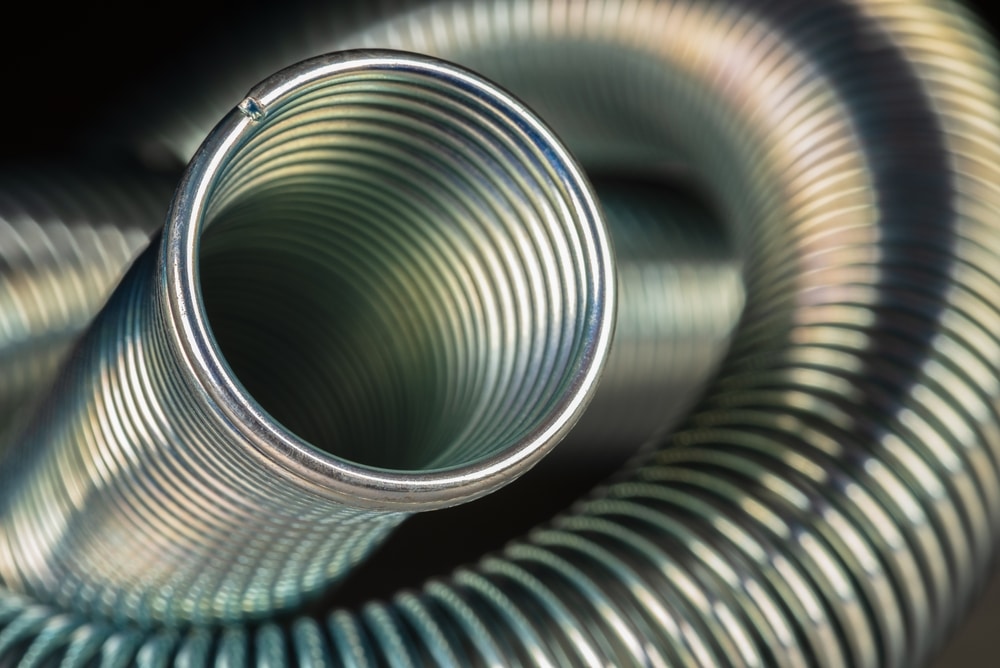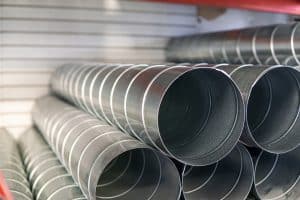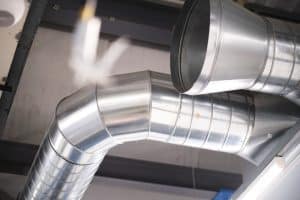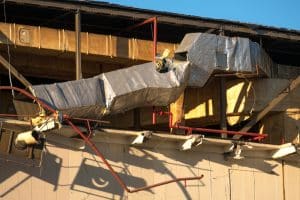What Are the 4 Rules for Flexible Ducts?
When it comes to flexible ducting, those who are new to using it may not realise that there are certain rules that come into play that serve to maintain the ducting’s effectiveness.
Although not knowing this rules won’t exactly make life extremely difficult, knowing them will definitely make installing flexible ducting a breeze.
In this blog, we will answer the question ‘What are the 4 rules for flexible ducts?’
With new buildings being made to be as energy efficient as possible, and the UK aiming for 95% of its electricity usage to be low carbon by 2030, it is imperative to understand how we can make the most of our ventilation. This is where MVHR units come in.
To prevent mould, fresh air should constantly be introduced into your dwelling daily, as it helps to regulate temperature and reduce condensation. Introducing fresh air can be as simple as having a ventilation routine, or installing extractors or MVHR units. Almost all of this is facilitated by ducting.
I-Sells is here to provide the answers you need whilst also supplying you with all the information you need to combat mould and have a well-ventilated home.
Flexible ducting
Ducting, as a whole, is used to ensure that air or other gasses travel from one destination to another without being compromised by any circumstances outside the ducting. Depending on the gas being transported through the ducting, the ducting can be made from PVC or aluminium, and other variants.
Flexible ducting is a form of ducting that is characterised by the ducting itself being flexible, rather than a solid, rigid shape. This makes it beneficial for instances in which the space that the ducting is being installed in is limited, or too complicated to install hard ducting in.
Although the flexibility of flex ducting is an extremely helpful asset, it can also be a hindrance in some instances, though this is entirely dependent on how it was installed.
If flexible ducting is installed incorrectly, the ducting will be prone to being ripped, in addition to having a reduced airflow. To counter these issues, ducting insulation can help to protect the ducting, additionally, correct installation is necessary. Below, we will discuss the 4 rules of flexible ducts, which directly relate to its installation process.
What are the 4 rules of flexible ducts?

The 4 rules of flexible ducts are all based around the installation process, and how to get the most out of the flexible duct. These 4 rules are based around…
- Cutting the ducting
- Laying the ducting
- Supporting the ducting
- Sealing the ducting
Below, we will offer an explanation into each of these rules.
1. Cutting the ducting
Cutting the ducting refers to the actual length of ducting you have. Ideally, you should have as little as possible. Any excess ducting that is installed not only takes up more space than is needed, but also reduces the airflow efficiency.
With that understanding, you should be measuring the amount of ducting you need before installing. If you are struggling to get this right, contacting a HVAC installer would be the most responsible option.
2. Laying the ducting
Laying flexible ducting refers to how it is placed, if it is placed with little to no bends, or the bends it has are gradual and not sharp, then your flexible ducting has been laid correctly.
If you allow your ducting to have sharp bends, it can not only compromise the ducting itself, making it easier to rip, it can also seriously affect the flow of air travelling through it.
Air travels at its most efficient when it is going in one direction. Flexible ducting is installed because one straight line isn’t possible in the space. To offset any potential airflow issues, the ducting must curve gradually, rather than have an extremely sharp bend.
To maintain a smooth airflow in any area that bends in your flexible ducting, you should remember that the radius of the bend should be equal to, or larger than the diameter of the ducting itself.
3. Supporting the ducting
With flexible ducting, depending on how it is laid, there can be occasions where the ducting can not remain totally vertical. Or the ducting needs to be suspended in order to remain straight. Neglecting this can cause issues in airflow efficiency. Because the ducting isn’t supported to remain as straight as possible.
You can support flexible ducting with straps, factory installed suspension systems and saddle shaped supports.
4. Sealing the ducting
Sealing the flexible ducting refers to ensuring there is no air escaping from anywhere other than the two exits of the ducting. The best way to seal flexible ducting, is through the use of duct mastic. This gives an airtight seal, which further reinforces the airflow the ducting provides.
Why doesn’t hard ducting have these rules?
Because hard ducting is different in nature to flexible ducting, some of these rules don’t apply to it. If anything, sealing and cutting the ducting would apply to hard ducting. That being said, hard ducting has its own issues to address, hence why it doesn’t share the same four rules.
Buying and installing flexible ducting

I-Sells is a provider of ventilation solutions and everything that comes with it, including ducting. We supply flexible ducting and much more.
Whether it is flexible aluminium or PVC ducting you’re searching for, we have it. Some of our options can also vary in diameter in accordance with your needs. This includes 100 mm and 102 mm in diameter. This also applies to the lengths we have available.
Flexible ducting or hard ducting can be installed by yourself if you so choose. However, we would only recommend this if you have previous experience in doing this, as one mistake could cause a whole host of issues.
There are many HVAC technicians that offer a variety of services to help you with your ventilation, whether it be for a business or your own home. This can include ducting installation, depending on whom you visit.
That being said, we hope that if you are intending on installing flexible ducting yourself, that the 4 rules we provided have made the process much easier for you!
The problem with flexible ducts
The problem with flexible ducting, is not actually the ducting itself, it is just a case of how it has been installed. Someone with no knowledge, or just trying to quickly finish a job, is more than likely going to install flexible ducting incorrectly.
Flexible ducting may be convenient, but installing it requires patience, precision, and purpose. Because there is more room for error within flexible ducts, people may believe it is the less effective option. But we feel that having a professional installation vs a ‘quick’ installation makes all the difference.
This goes all the way to the ventilation system. You will not see the best that system has to offer if its ducting isn’t efficient enough.
Invest in flex ducting today

We at I-Sells endeavour to ensure our customers have all the information they require before investing in our mould solutions. Be sure to visit our blog page to learn about the vast array of factors and issues surrounding ventilation, mould, condensation, and much more.
We hope to have answered the question ‘What are the 4 rules for flexible ducts?’
We understand you may have more questions, do not hesitate to contact us for more information about whatever you need our help with. If you’d like to send us an email, click here. For other contact options, see below:
Call us on 020 8463 9696
Visit us at our showroom:
*OPENING TIMES*
Monday – Friday: 8:00 am to 5:30 pm
Saturday: 9:00 am to 12:00 pm
Sunday: Closed
15 St John’s Parade
Sidcup, Kent
DA14 6ES
United Kingdom





























Add comment
You must be logged in to post a comment.